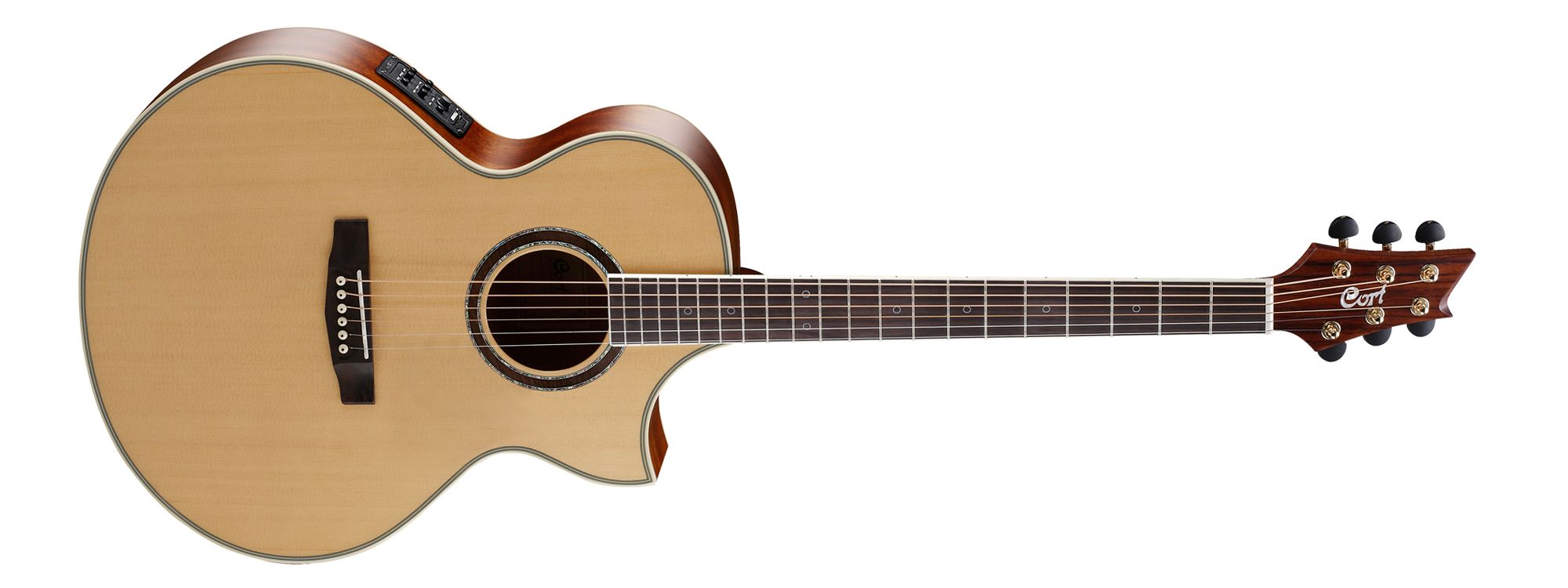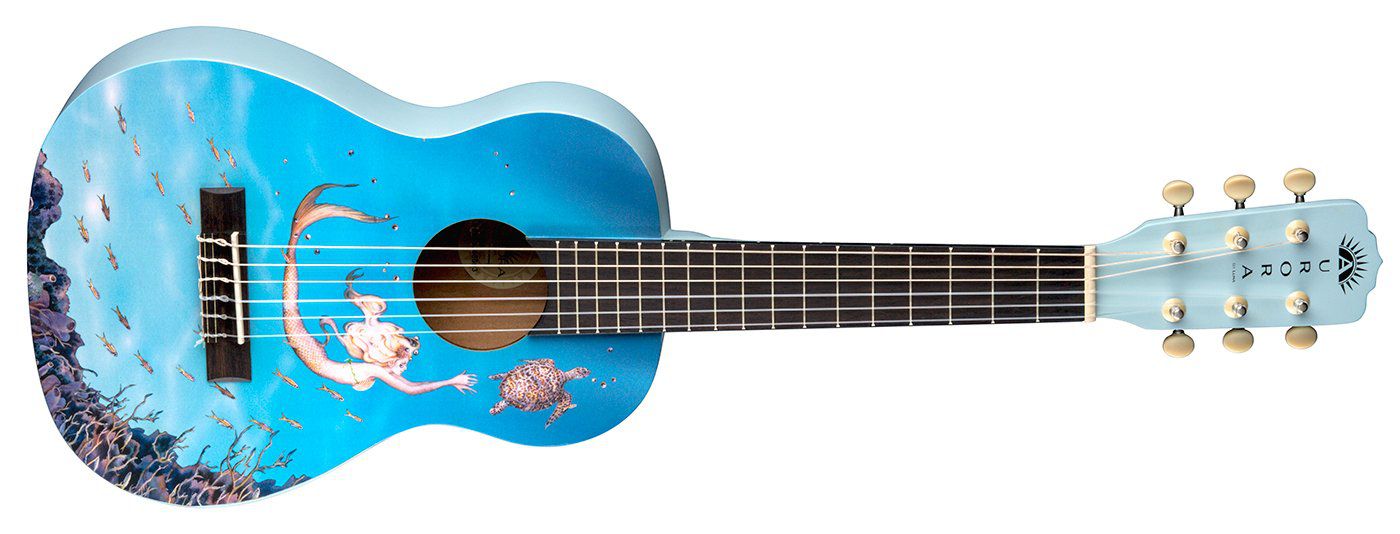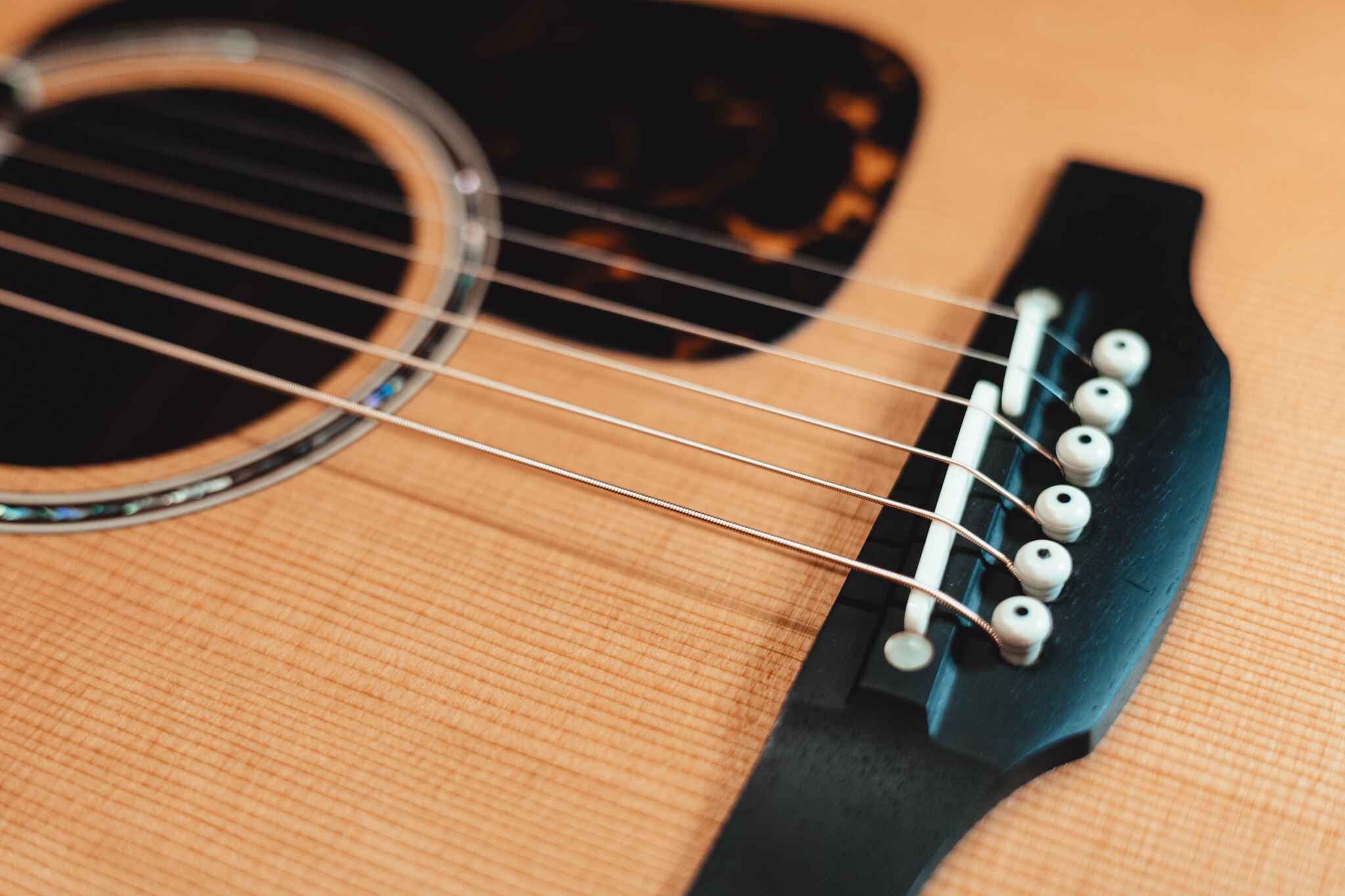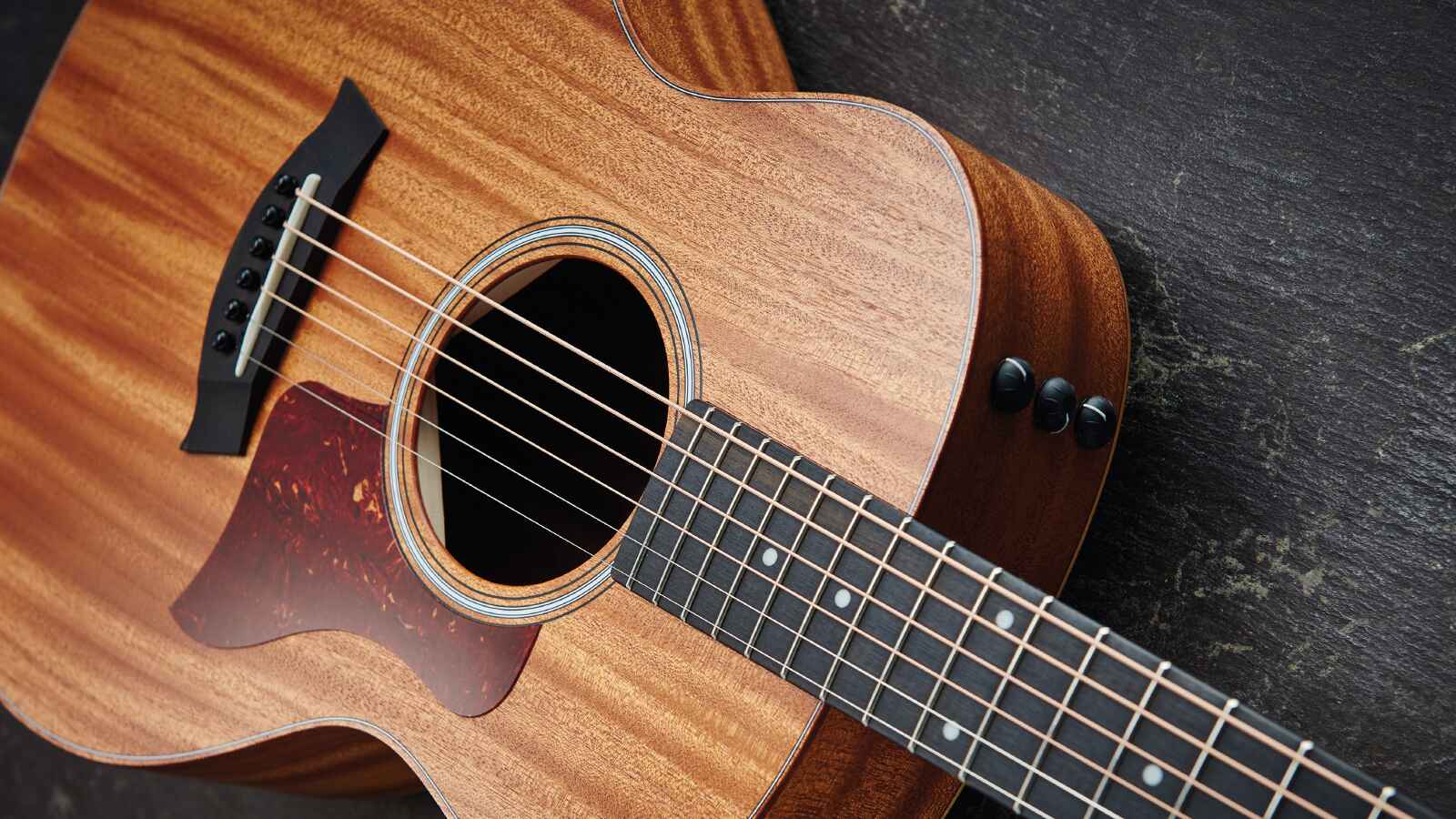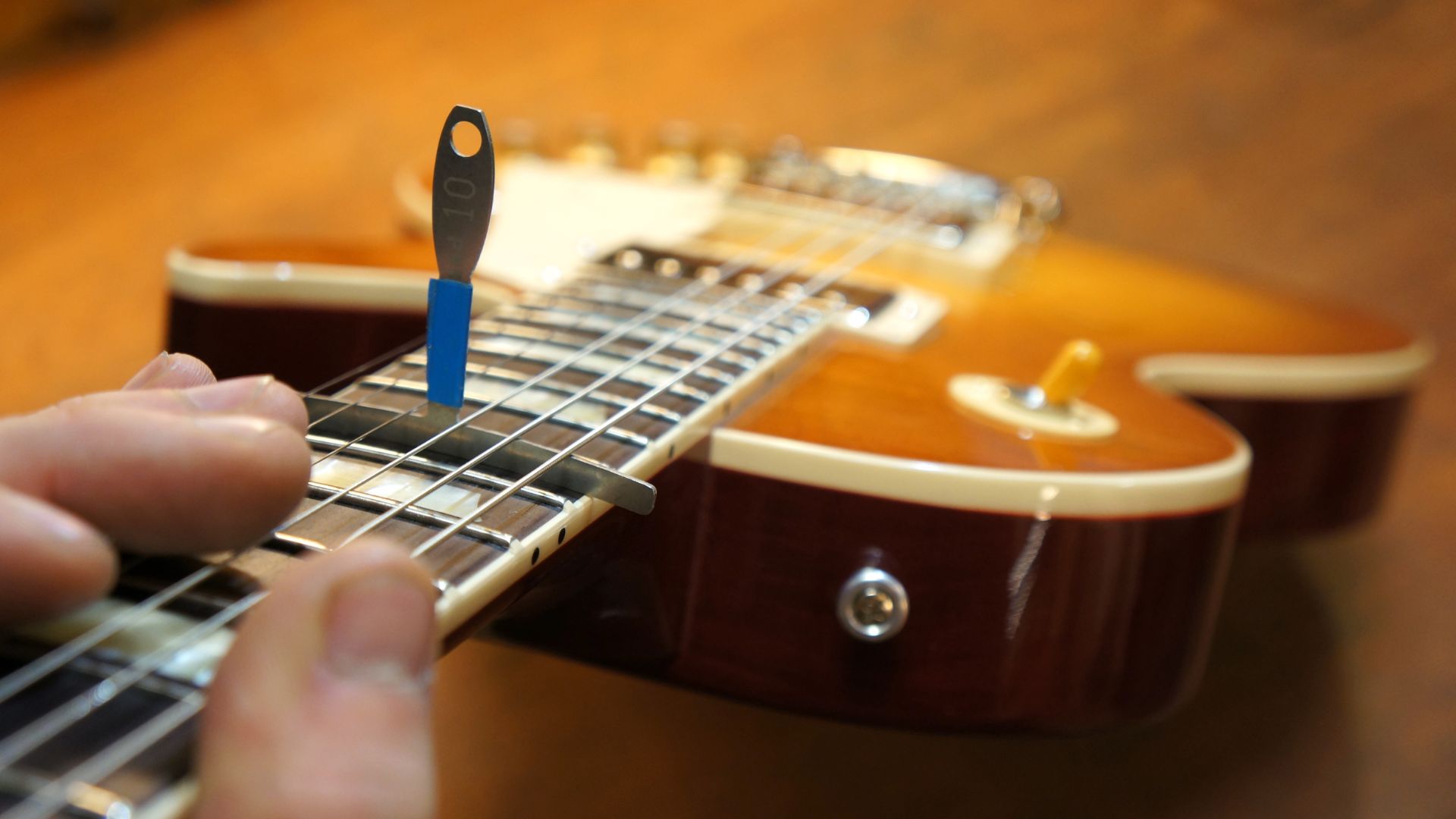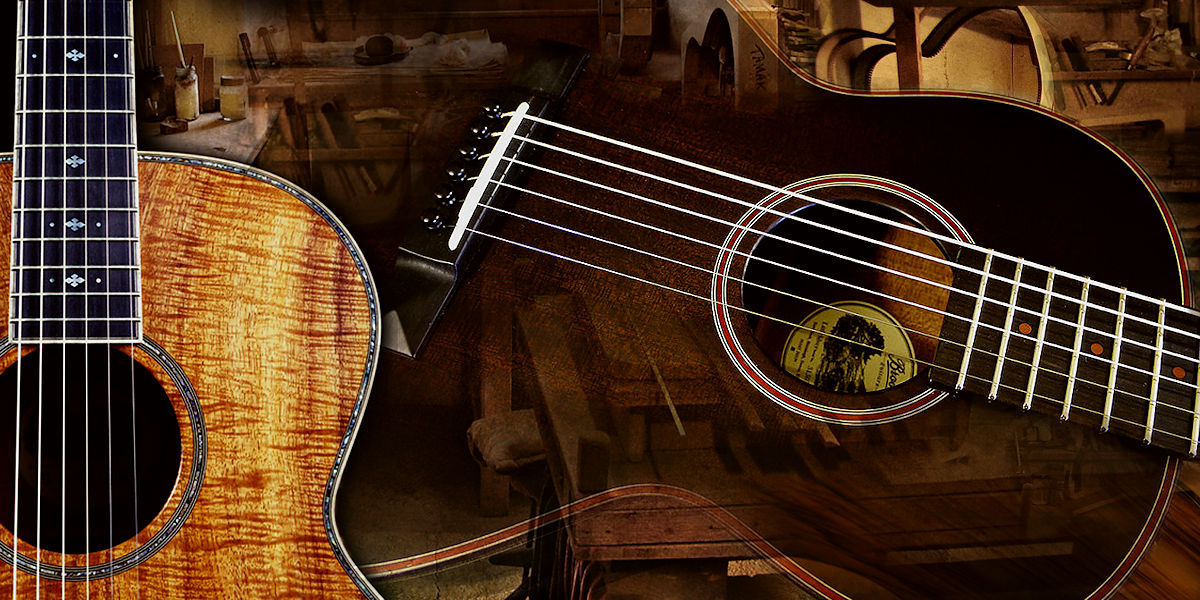Introduction
Welcome to our guide on the average scale length of an acoustic guitar! If you’re a guitarist or someone interested in learning more about guitars, understanding scale length is crucial. It plays a significant role in the playability, tone, and overall feel of an acoustic guitar.
Scale length refers to the length of the vibrating portion of a guitar’s strings, from the nut to the saddle. It is typically measured in inches or millimeters. The scale length directly affects the tension, tone, and fret spacing of a guitar. Different scale lengths can result in varying levels of string tension, which can greatly impact playability and tone. As such, it’s important to find the right scale length that suits your playing style and preferences.
In this article, we will discuss why scale length is important, how to determine the scale length of an acoustic guitar, and the average scale lengths for different types of acoustic guitars. We will also explore the factors that affect scale lengths and provide tips on finding your ideal scale length.
Whether you are a beginner guitarist selecting your first acoustic guitar or an experienced player looking to expand your collection, understanding scale length will help you make informed decisions when it comes to choosing the right instrument.
So, let’s dive in and explore the world of scale lengths in acoustic guitars!
What is Scale Length?
Scale length is a fundamental measurement that determines the distance between the nut and the saddle of a guitar. It is typically expressed in inches or millimeters and plays a crucial role in shaping the characteristics of an acoustic guitar.
When we talk about scale length, we are referring to the vibrating length of the strings. In other words, it is the portion of the strings that are free to vibrate when plucked or strummed. The scale length directly affects the tension, pitch, and overall feel of the strings.
The longer the scale length, the higher the string tension and the higher the pitch when the strings are tuned to standard pitch. Conversely, a shorter scale length results in lower string tension and lower pitch.
Scale length also influences the spacing between the frets on the guitar’s neck. With a longer scale length, the frets are placed further apart, which can make playing certain chords and stretches more challenging. On the other hand, a shorter scale length can make it easier to reach and fret notes, especially for players with smaller hands.
It’s important to note that scale length is not the same as the total length of the guitar. The scale length is a specific measurement that determines the tension and pitch of the strings, while the total length of the guitar includes the body and other components.
Understanding scale length is essential because it influences the playability and tone of an acoustic guitar. Different scale lengths can produce distinct tones and responses from the strings, which can greatly affect the overall sound of the instrument.
Now, let’s move on to why scale length is important and how it can impact your playing experience!
Why is Scale Length Important?
Scale length is a critical factor to consider when selecting an acoustic guitar because it directly affects the playability and tone of the instrument. Here are a few key reasons why scale length is important:
Playability: Scale length plays a significant role in determining how a guitar feels and plays. A longer scale length generally results in higher string tension and requires more finger strength to fret notes. On the other hand, a shorter scale length has lower string tension and may be more comfortable for players with smaller hands or those who prefer a lighter touch. The scale length directly impacts how easy or challenging it is to navigate the fretboard, play chords, and execute complex musical passages.
Tone: Scale length contributes to the overall tone of an acoustic guitar. Longer scale lengths tend to produce more sustain, fuller resonance, and a brighter sound. The increased tension on the longer strings can result in a more pronounced attack and greater clarity. Shorter scale lengths, on the other hand, can produce a warmer, mellower tone with a quicker attack and less sustain. The choice of scale length can help you achieve the desired tonal characteristics for the style of music and sound you’re aiming for.
String Tension: Scale length directly affects the tension that strings need to be tuned to reach standard pitch. Longer scale lengths require higher tension to achieve the desired pitch, while shorter scale lengths require lower tension. String tension has an impact on how the strings feel under your fingers, how responsive they are to your playing dynamics, and how they interact with the guitar’s body to produce sound. Finding the right balance of string tension for your playing style and preferences is crucial to achieving optimum playability and tone.
Fret Spacing: Scale length influences the spacing between frets on the guitar’s neck. Longer scale lengths result in wider fret spacing, which can affect how comfortably you can reach and fret notes, especially in challenging chord shapes and stretches. If you have smaller hands or prefer playing intricate fingerstyle or lead guitar passages, a shorter scale length may provide more comfortable fret spacing and make certain techniques easier to execute.
Considering the importance of playability, tone, string tension, and fret spacing, understanding and selecting the right scale length for your acoustic guitar is essential. In the next section, we will explore how to determine the scale length of an acoustic guitar.
Determining the Scale Length of an Acoustic Guitar
When it comes to determining the scale length of an acoustic guitar, there are a few methods you can use. Here are three common ways to measure or identify the scale length:
Guitar Specifications: One of the easiest ways to determine the scale length of an acoustic guitar is by looking at its specifications. Most manufacturers provide this information in the product description or on their website. You can find the scale length listed in inches or millimeters. This method is particularly useful when buying a new guitar or researching different models.
Measure from Nut to Saddle: If you already have the guitar in your hands, you can measure the scale length yourself. Simply take a tape measure or ruler and measure the distance from the nut (where the strings rest at the top of the neck) to the saddle (the piece that holds the strings at the bridge). Make sure to measure from the center of the frets and not just the edges. This measurement will give you the scale length of the guitar.
Measure from the 12th Fret to the Saddle: Another common method is to measure the distance from the 12th fret to the saddle and double it. The 12th fret is usually the halfway point between the nut and the saddle, so doubling this measurement provides an estimate of the overall scale length. This technique can be useful if you don’t have access to the full length of the guitar or if you want to double-check the manufacturer’s specifications.
By using these methods, you can accurately determine the scale length of your acoustic guitar. Knowing the scale length is crucial for understanding the instrument’s playability, string tension, and potential tonal qualities. In the next section, we will discuss the average scale lengths for different types of acoustic guitars.
Average Scale Lengths for Acoustic Guitars
Acoustic guitars come in various sizes and shapes, and as a result, their scale lengths can differ. While there is no definitive rule, certain scale lengths are commonly associated with specific types of acoustic guitars. Here are the average scale lengths for different types of acoustic guitars:
- Dreadnought and Jumbo Guitars: Dreadnought and jumbo guitars, known for their bold and robust sound, typically have a scale length ranging from 25.4 to 25.5 inches (645 to 648 millimeters). The longer scale length contributes to the guitar’s rich tone, powerful projection, and enhanced bass response.
- OM and Auditorium Guitars: OM and auditorium guitars have a slightly smaller body size compared to dreadnoughts, and they often feature a scale length of around 24.9 to 25.4 inches (632 to 645 millimeters). The shorter scale length offers a balanced tone, warm midrange, and comfortable playability.
- Parlor Guitars: Parlor guitars, known for their compact size, generally have a shorter scale length ranging from 24 to 24.9 inches (610 to 632 millimeters). These guitars provide a unique and intimate sound, with focused midrange and a vintage-inspired character.
- Travel Guitars: Travel guitars, designed with portability in mind, often have even shorter scale lengths. They can range from 22 to 24 inches (559 to 610 millimeters), allowing for easy playability while maintaining a balanced tone suitable for practicing or jamming on the go.
It’s essential to remember that these are just average scale lengths, and there can be variations within each guitar type. Furthermore, individual preference and playing style play a significant role in determining the ideal scale length for a guitarist.
Now that we’ve explored the average scale lengths for different types of acoustic guitars, let’s delve into the factors that can affect scale lengths in the following section.
Factors Affecting Scale Lengths
While there are average scale lengths associated with different types of acoustic guitars, it’s important to note that scale length can vary within each guitar type. Several factors can influence the scale length chosen by guitar designers and players. Here are some of the key factors that affect scale lengths:
Guitar Size and Body Shape: The overall size and body shape of an acoustic guitar can impact the scale length. Generally, larger-bodied guitars, such as dreadnoughts and jumbos, tend to have longer scale lengths, while smaller-bodied guitars, like parlor guitars, often feature shorter scale lengths. Guitar makers carefully consider the balance between the size of the guitar and the scale length to ensure optimal playability and tonal characteristics.
Playing Style and Technique: The style of music played and the player’s preferred techniques can also influence the choice of scale length. For example, guitarists who predominantly play fingerstyle or intricate lead passages may opt for a shorter scale length to facilitate reach and agility. On the other hand, players who focus on strumming and delivering a powerful, dynamic sound may prefer a longer scale length.
Tonal Preferences: The desired tone and sound characteristics can play a role in selecting the appropriate scale length. Longer scale lengths are often associated with increased string tension and can produce a more focused, resonant tone with enhanced bass response. Shorter scale lengths, on the other hand, may yield a warmer tone with a quicker attack and less sustain. Ultimately, it’s crucial to consider how the scale length contributes to the tonal characteristics that align with your musical preferences.
String Gauge and Tension: The choice of string gauge and desired string tension also factors into determining the scale length of an acoustic guitar. Heavier gauge strings typically require higher tension to reach the desired pitch, which may necessitate a longer scale length. Lighter gauge strings can work well with shorter scale lengths as they require less tension to achieve pitch. Experimentation with different string gauge and tension combinations can help fine-tune the playability and sound of an acoustic guitar.
Personal Preference: Lastly, personal preference plays a significant role in determining the ideal scale length for a guitarist. Every player has unique preferences, playing styles, and physical attributes, all of which contribute to their choice of scale length. Trying out guitars with different scale lengths and seeking input from experienced players can assist in finding the optimal scale length that feels comfortable and resonates with your musical goals.
Considering these factors will help you better understand why scale lengths vary and how they can impact the playability and tonal characteristics of an acoustic guitar. In the next section, we will provide tips on finding your ideal scale length based on your individual needs.
Finding Your Ideal Scale Length
Finding the ideal scale length for your acoustic guitar is a personal and subjective process. It involves considering various factors, such as your playing style, physical attributes, and tonal preferences. Here are some tips to help you find your ideal scale length:
Try Out Different Guitars: One of the best ways to determine your ideal scale length is by trying out different guitars with varying scale lengths. Visit a music store and play guitars with different scale lengths to experience how they feel and sound. Pay attention to the playability, string tension, and the overall character of the instrument. This hands-on approach will give you a better understanding of which scale length suits your playing style and preferences.
Consider Your Playing Style: Think about the style of music you play or intend to play on the acoustic guitar. If you primarily play fingerstyle or intricate lead passages, a shorter scale length may enhance your ability to execute complex fingerings with ease. If you focus on strumming and delivering a powerful sound, you might find a longer scale length more suitable. Aligning the scale length with your playing style can greatly improve your overall playing experience.
Evaluate Your Physical Attributes: Consider your hand size and finger reach when selecting a scale length. If you have smaller hands or struggle with reaching certain chord shapes on guitars with longer scale lengths, a shorter scale length might provide better ergonomics. Conversely, if you have larger hands or prefer wider fret spacing, a longer scale length might feel more comfortable for you.
Experiment with Different String Gauges: The choice of string gauge can also affect how a guitar feels and responds. Experimenting with different string gauges and corresponding tension levels can help fine-tune the playability and sound of the instrument. Keep in mind that changing string gauge might require adjustments to the guitar’s setup, including truss rod and action adjustments.
Seek Advice and Guidance: Consult with experienced guitar players, teachers, or guitar technicians who can offer guidance based on their expertise. They may provide valuable insights and recommendations based on your specific needs and preferences.
By exploring different guitars, considering your playing style, physical attributes, and experimenting with string gauges, you can find the scale length that feels comfortable and suits your musical goals. Remember, there is no one-size-fits-all answer when it comes to scale length, so trust your instincts and choose based on what feels right for you.
Now that you have a better understanding of how to find your ideal scale length, we can conclude our guide on the average scale length of an acoustic guitar with a final summary.
Conclusion
Understanding the average scale length of an acoustic guitar is vital for guitarists and enthusiasts alike. Scale length not only affects the playability and comfort of the instrument but also contributes to its overall tone and sound characteristics.
In this guide, we have explored the concept of scale length and its importance in acoustic guitars. We discussed how scale length is measured, identified the average scale lengths for different types of acoustic guitars, and examined the factors that can influence scale length choices.
By determining the ideal scale length for your acoustic guitar, you can enhance your playing experience and achieve the desired tone and response from your instrument. Remember to consider factors such as your playing style, physical attributes, and tonal preferences when selecting a scale length.
If possible, try out different guitars with varying scale lengths to get a hands-on feel for how they affect playability and sound. Seek advice and guidance from experienced players or guitar technicians to further refine your decision-making process.
Ultimately, finding the right scale length is a personal journey. What works best for one guitarist may not work as well for another. Trust your instincts and choose a scale length that feels comfortable, enhances your playing abilities, and aligns with your musical goals.
We hope this guide has provided you with valuable insights into the average scale length of acoustic guitars and empowered you to make informed choices when it comes to selecting and enjoying your instrument.
Now, armed with this knowledge, go forth and unleash your creativity on your acoustic guitar with the perfect scale length for you!











